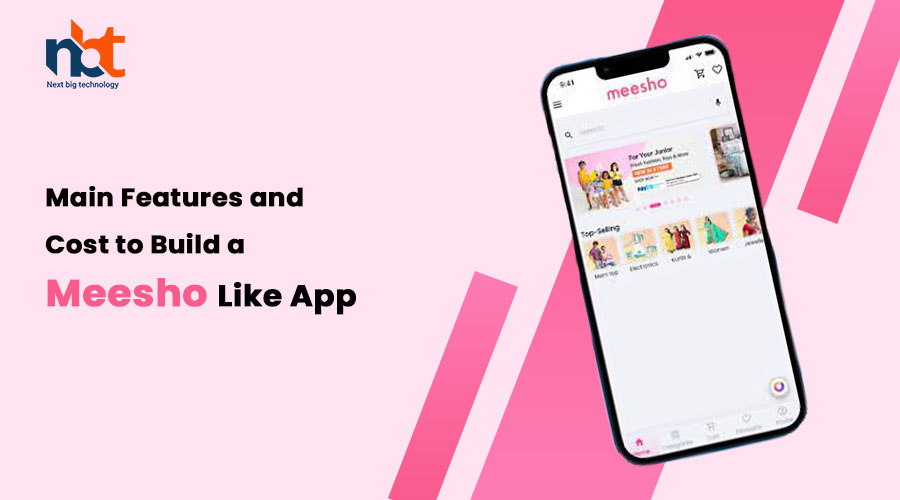Introduction:
Meesho has emerged as a leading social commerce platform, enabling individuals to start their own online businesses by reselling products through social media. If you’re inspired by the success of Meesho and considering building a similar app, it’s important to understand the main features required and the associated costs to create a robust social commerce platform. In this comprehensive guide, we will explore the main features and cost factors to consider when building a Meesho-like app. Let’s dive in!
I. Main Features of a Meesho-Like App:
- User Registration and Profiles:
- Allow users to create accounts, set up profiles, and manage personal information, including their business details, payment preferences, and contact information.
- Product Catalog and Listings:
- Provide a wide range of product categories and enable sellers to create detailed listings with product descriptions, pricing, images, and other relevant information.
- Social Sharing and Reselling:
- Enable users to share product listings with their social network, allowing them to promote and resell products to their friends and followers.
- Chat and Messaging:
- Implement a messaging system that allows buyers to communicate with sellers for inquiries, order details, and support.
- Order Management:
- Provide sellers with tools to manage their orders, including order processing, tracking, and notifications to buyers.
- Secure Payment Gateway:
- Integrate a secure and reliable payment gateway that supports various payment methods, ensuring smooth transactions between buyers and sellers.
- Commission and Earnings Management:
- Track and manage seller earnings and commissions, providing a transparent overview of their sales and financial performance.
- Ratings and Reviews:
- Allow buyers to provide ratings and reviews for products and sellers, helping build trust and credibility within the community.
- Notifications and Alerts:
- Send real-time notifications and alerts to users for order updates, product recommendations, and important platform updates.
- Analytics and Insights:
- Provide sellers with analytics and insights on sales performance, customer behavior, popular products, and revenue generation.
- Referral Program:
- Implement a referral program that incentivizes users to invite new sellers or buyers, contributing to user acquisition and growth.
- Seller Support and Training:
- Offer resources, guides, and support channels to help sellers with onboarding, product sourcing, marketing strategies, and business growth.
- Inventory Management:
- Enable sellers to manage their inventory, including stock tracking, low stock alerts, and seamless integration with supplier systems.
- Integration with Social Media Platforms:
- Facilitate easy integration with popular social media platforms, allowing sellers to share their product listings and drive traffic to their stores.
II. Cost Factors to Consider:
- Platform Selection:
- Determine whether you want to build the app for iOS, Android, or both platforms. The choice will impact development costs and timeframes.
- App Design and User Interface:
- Investing in intuitive and user-friendly app design is crucial to providing a seamless social commerce experience. Costs may vary based on design complexity and customization requirements.
- Development Team:
- Hiring experienced developers, designers, and quality assurance specialists is essential for building a robust and feature-rich social commerce app. The team size will impact costs.
- App Development Approach:
- Decide between native or cross-platform development. Native apps offer better performance but require separate development for iOS and Android. Cross-platform solutions can reduce development time and costs.
- Backend Infrastructure:
- Building a scalable backend infrastructure to handle user management, product listings, order processing, payments, and secure transactions is critical. Costs will vary based on infrastructure complexity and hosting requirements.
- Payment Gateway Integration:
- Costs may be incurred for integrating payment gateways, including setup fees, transaction fees, and ongoing maintenance costs.
- Third-Party Integrations:
- Consider the need for integrating third-party services, such as logistics providers or supplier systems, which may incur additional costs.
- Testing and Quality Assurance:
- Allocate resources and budget for thorough testing to ensure the app’s functionality, performance, and security.
Conclusion:
Building a Meesho-like app requires careful consideration of the main features and cost factors involved in creating a robust social commerce platform. Costs will vary depending on factors such as platform selection, app design, development approach, team size, and desired features and functionality. Prioritize the main features based on your target audience and business goals to control costs while ensuring the app’s reliability and user satisfaction. By considering the main features and cost factors discussed in this guide, you can lay a solid foundation for developing a successful Meesho-like app that empowers individuals to start their own online businesses through social reselling.

















